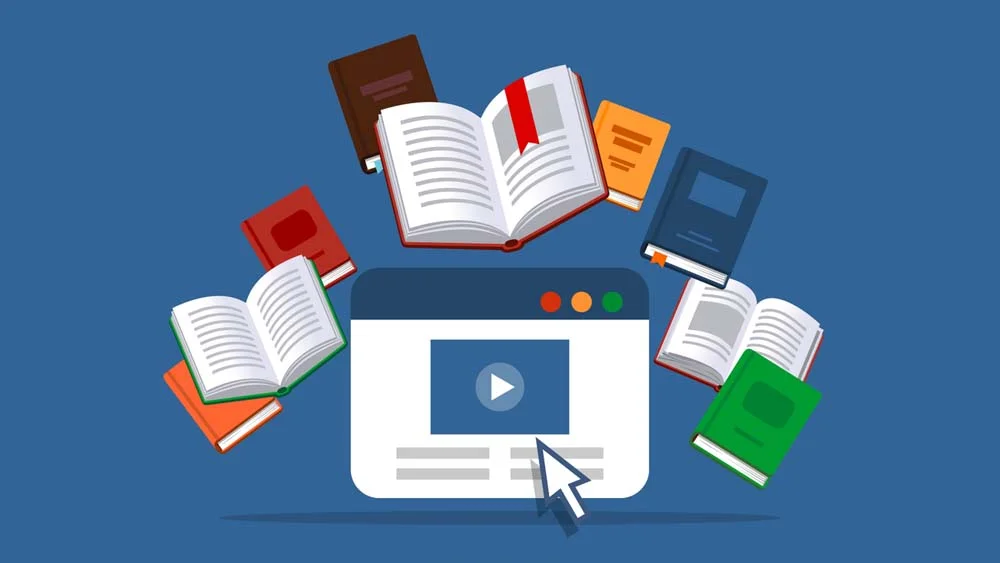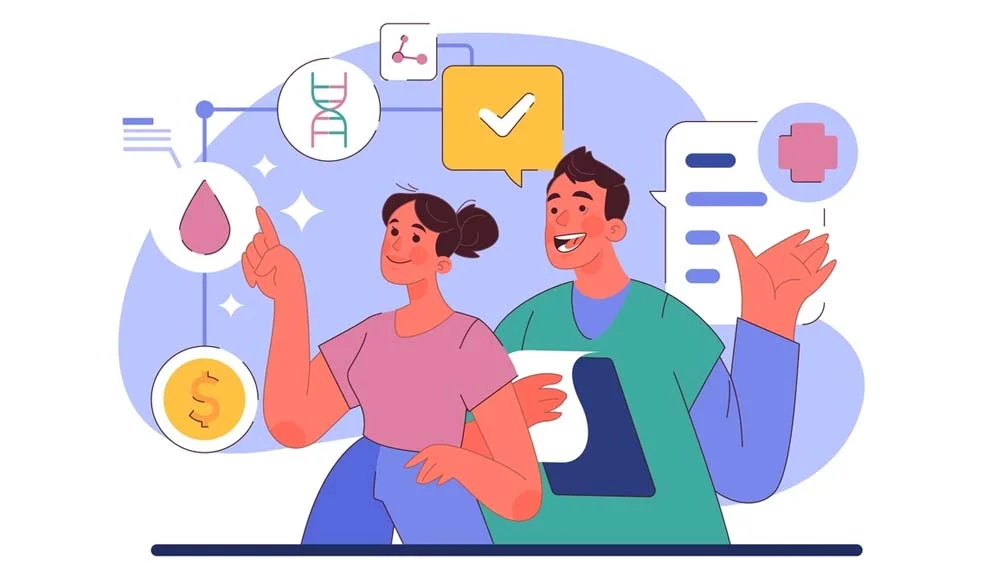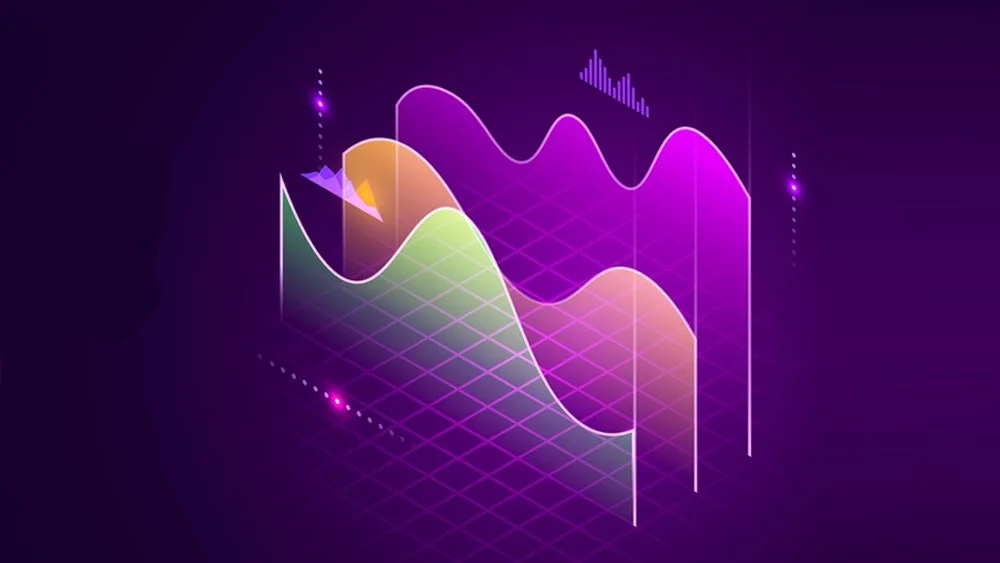The medical field is one of a kind. Gaining knowledge of the human body with all its secrets, exceptional anatomy, and amazing mechanisms is not an easy thing to do. It takes months and years of studying, practicing, and mastering such a pristine career. You might think, What does this have to do with apps? Well, let me tell you that apps have a very major and great role in facilitating the first half of the process of taking the medical career path, which includes studying and practicing. Not only are apps a major part of the medical field for providing services, but they are also the same for helping medical students. In this article, we will explore the role of applications for medical students. We will also demonstrate the best apps made for med students that could help you.
The Merger of Apps and The Medical Field
The merger of apps and the medical field is one of the most recent mergers in the tech world. Given the great significance of the medical field and the abundance of technologies already used, applications really proved to be absolutely effective. This merger didn’t come to light until early 2020. Yes, the pandemic, where many useful things started, and unfortunate occurrences happened. Although applications have been a part of the medical field for some time, they weren’t this common or had as much recognition as they do now.
During the pandemic, the health and medical fields were the two leading fields. The ability to access any of the healthcare services or receive medical consultations wasn’t as accessible and was scarce at some point.
Luckily, applications paved the way and acted as the facilitator for remote access to all kinds of healthcare services. This helped the professionals in the medical sector to continue with their job and treat all patients. This was especially beneficial for patients with chronic diseases who needed continuous care and consultation.
Additionally, this merger was also enhanced by the recent implementation of advanced technologies and applications. These technologies, such as machine learning, artificial intelligence, the Internet of Things, and so on, helped improve the quality of patient care and made the process of providing healthcare services easier and more seamless.
Advantages of Incorporating Apps Into the Medical Field
Incorporating apps into the medical field offers numerous advantages that significantly impact various aspects of healthcare delivery, patient care, and medical administration. Some of the key advantages include:
Enhanced Patient Engagement
Apps improve the engagement of patients by giving users easier access to healthcare services, including doctor appointment calendars, prescription reminders, and instructional materials. As a result of their participation, patients are more likely to follow their treatment programs and learn more about their conditions.
Improved Access to Healthcare
Apps fill the void in healthcare delivery, especially in underserved or rural areas. Medical apps facilitate remote consultations, eliminating the need for in-person meetings between patients and medical professionals.
Efficient Administrative Processes
Appointment scheduling, paying, and gaining access to medical records are just some of the administrative responsibilities made easier by apps. The time savings for healthcare professionals are a bonus, but the streamlined procedures also benefit patients.
Enhanced Communication and Collaboration
Healthcare providers can collaborate and communicate more effectively with the use of apps. With their help, doctors may more easily collaborate and provide better treatment to their patients by sharing data, photos, and other relevant data in real-time.
Personalized Healthcare Solutions
Apps help create individualized healthcare solutions through data collection and analysis. They can keep tabs on patients’ vitals, give them individualized health recommendations, and help those with chronic illnesses cope better.
Cost Savings
Apps can assist in reducing healthcare expenditures for both patients and healthcare facilities by decreasing the number of redundant office visits and simplifying administrative tasks. Additionally, early intervention and preventative care enabled by these apps can contribute to cost savings in the long term by preventing more serious health conditions.
Research and Data Analysis
With the use of apps, researchers can gather a large amount of data for academic and medical research. This can then be used to improve diagnostics, treatment options, and preventative care.
Types of Medical and Health Apps and The Top Functionalities They Offer
1. Mental Health Apps
The first and most important type of medical app is a mental health app. Mental health apps gained much recognition in the last few years, which also peaked in 2020. Mental health is a crucial matter that everyone should be aware of. Millions of people with serious mental health issues lost access to their doctors during the pandemic, which was very stressful and tough. Luckily, mental health applications are here to serve as an amazing alternative and offer virtual therapy sessions to millions of people around the world. These apps had features that allowed people to book therapy sessions, communicate with specialists, and get prescriptions.
2. Women’s Health Apps
The second type is also emerging as a very important category of medical apps. Women’s health apps are invaluable tools for women all around the world. They offer comprehensive health services that range from consultation, observation, pregnancy tracking, and many more that women need throughout their daily lives. These apps don’t only provide tools; they provide endless knowledge and awareness about women’s health that everyone needs and give a chance for women who have no access to proper healthcare to learn about their bodies and how to deal with them.
3. On-Demand Doctors Apps
The last type of medical app is an on-demand doctor app. On-demand doctor apps are the latest breakthrough in the category of health apps. These apps’ main aim is to provide patients with the most comfortable and seamless healthcare services and facilities for remote doctor visits. Through these apps, patients can book an on-demand doctor in whatever specialization they need. They can view everything about doctors, like information, prices, reviews, and so on. Some apps also give patients the choice to schedule a remote visit or an actual home visit.
How Can Med Students Use and Benefit From Applications?
Medical students can benefit significantly from applications in various aspects of their education and training. Here’s how apps can assist medical students:
I. Learning Resources

Applications allow users to gain entry to enormous databases, electronic books, and online resources. Medical students can use them as a quick reference, learn about anatomy and disorders, and gain knowledge about different procedures.
II. Study Aids
Medical students might benefit from apps that include study tools like flashcards, quizzes, and practice tests. These tools are useful for memorizing and learning difficult medical terminologies, topics, and so on. Also, for those who are overwhelmed with difficult writing assignments or need extra writing help, there is SameDayPapers service that offers professional writing services for essays, term papers, and any other assignments. This way, they can free up the time to focus on studying and practicing more complex subjects.
III. Clinical Skills Training
To improve the training of clinical skills, some apps include simulations or virtual patient experiences. Students can use these resources to put their knowledge of diagnosis and decision-making to the test in simulated clinical settings.
IV. Collaboration and Networking
Oftentimes, medical applications serve as communities where students may share their work, discuss cases, and learn from one another. These communities are useful for exchanging study resources, debating difficult cases, and expanding one’s professional circle of influence.
V. Note-taking and Organization
Students can use apps to help them keep track of their study time, organize their notes and assignments, and create to-do lists. They help students save time and energy by neatly arranging their study materials.
By employing these tools, medical students can enhance their overall educational experience, gain practical expertise, and accelerate their studies. Students should strike a balance between traditional teaching strategies and app-based education, and they should verify the authenticity, validity, and usefulness of the apps they use.
Best Apps Made for Med Students
Brainscape
As we all know, medical students need a lot of studying. It is basically an endless process for them. Since applications are now a fundamental part of the educational sector, medical students can use them to enhance their learning process. And Brainscape is the perfect app for this purpose. Brainscape is a renowned app for medical students with over 10 million users. This application helps medical students study using flashcards, which is a very effective technique to memorize and learn a large amount of information. The application contains a plethora of flashcards in many subjects, such as anatomy, dentistry, and many more.
Prognosis
The second app that is a must-have for all medical students is Prognosis. Since flashcards alone are slightly effective, they need another tool that would make them more ready to interact with patients. One of the things that medical students need to practice is diagnosis, as there are a large number that they need to memorize and some can be very similar. Prognosis helps medical students practice as many cases as they need, as it includes a large number of different cases in different specializations. What makes the app more special is that all the cases are interactive and genuine; it also evaluates and discusses the student’s diagnosis of the case.
MedNotes
Now, when you want references and trusted sources for studying, then MedNotes is the app for you. MedNotes is a comprehensive and all-inclusive application that all medical students use around the world. The app includes a rich and reliable library of many references, medical books, research papers, notes, diagnoses, and many more. This makes it a top choice for studying medicine and one of the best apps for med students.
PEPID
Lastly, in the list of the best apps for med students comes the PEPID application. Many people describe this app as a hidden gem. PEPID is an all-in-one application that nearly includes all the features that we have discussed above and what any medical student would need. The main feature of this app is a broad library of drug information and interaction that allows medical students to identify the suitable drug for each case. It also includes features like a pill identifier, a medical calculator, notes and books, and many more that would make the learning process for any medical student effective and complete.
En Fin
Applications are now more than just advanced tools that we can use to make things easier; they are also becoming fundamental parts of our lives that we can’t function without. The way that applications are used to enhance medical students’ learning journeys is transformative and proves that there is no end to the capabilities of applications. But what if someone wants to provide people with more capabilities than we have talked about? Well, just as the capabilities of applications have no end, the capabilities of no-code development also have no end.
No-code development is the latest and ultimate solution for anyone who has more to offer but doesn’t have enough skills or resources. Many no-code app-building platforms offer many tools and features that people can use to build robust applications. In the case of building an application for medical students, nandbox offers everything a user would need and more. The nandbox has a rich library of features, including social media features, reminders, media libraries, and many more. This comes with the ability to integrate any third-party applications. Seize the chance now and start your free trial with nandbox to create the best apps for med students!





